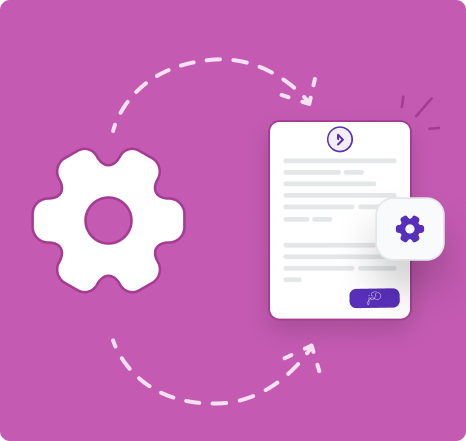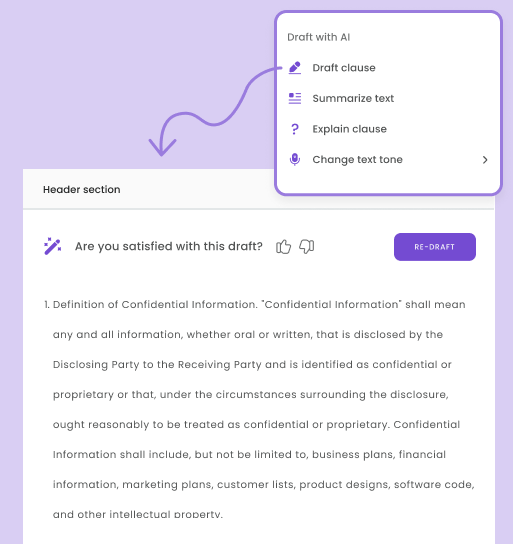In any business, there’s a form of throughput. If you’re a software company, that could be features. If you’re a design firm, that could be completed designs.
You could also break throughputs down by function.
The marketing throughput would be different from the customer service throughput.
Irrespective of what you’re talking about, it needs to be measured and improved.
In this guide, you’ll get a deeper understanding of what throughput is, why tracking it is essential, different ways to measure it, and improving it.
Understanding Throughput
Throughput is the rate tasks are completed or outputs are produced as measured against a specific time period. It’s a measure of efficiency within a process and will help you understand how well the resources allocated to the system or process are being used.
The most common way to express throughput is the number of units produced or tasks completed within a specific time frame. For example, if you write articles, it could be measured as articles written per day.
Applications
It has various applications in different industries. Consider manufacturing. You may measure the throughput of an assembly line per hour, per shift, or per day. This allows you to understand how efficient the process is, how efficient the workers are, and how efficient the machinery is.
In customer service, the throughput may be the number of tickets resolved per hour, the number of tickets escalated, and so on.
The way throughput is measured is wholly depending on the nature of the deliverable of your organization. You wouldn’t measure an assembly line if you’re developing software and you wouldn’t measure the number of bugs fixed if you’re performing marketing services.
Key Characteristics
Throughput is measured using time. There are two factors – speed and volume. The higher the throughput rate at a consistent quality, the more efficient the system is. Things like, resource constraints, equipment failure, human resource issues, etc. impact the throughput rate.
Also, note that throughput is everchanging and you shouldn’t aim for an exact figure but a target range that should be used as a guide. This is especially true if there’s a large human resources component.
Why Tracking Throughput Matters
Performance Measurement
Throughput is a direct measure of how productive a system is. It lets you know about performance over time using a standard measurement method.
You can understand whether a process or system is meeting performance requirements, underperforming, or outperforming expectations. With this information, you can gauge whether your processes need to be improved.
Bottleneck Identification
Throughput measurement helps you find bottlenecks and is an important part of bottleneck analysis.
If the throughput rate usually remains within a sudden range but then falls, it could be a sign of a bottleneck. If this is a recurring issue, a deeper root cause analysis may need to be carried out. If not, you can learn about it early and perform quick fixes.
Resource Optimization
You have a better handle on the different resources used in your organization. If throughput shows a regular decline, you may need to better allocate resources, optimize processes, or rebalance the workloads. The result is that you reduce waste, cut costs, and increase profitability.
Customer Satisfaction
High throughput is critical to meeting customer demands and adhering to deadlines. When systems operate efficiently, businesses can deliver products or services on time, maintaining reliability and trust with customers. Conversely, low throughput may lead to delays, unmet expectations, and customer dissatisfaction. Tracking and improving throughput helps maintain competitive service levels and fosters long-term customer relationships.
How to Measure Throughput
As mentioned earlier, throughput is a function of volume measured against time. The specific time periods and type of unit you measure are determined by the work you do.
Unit of Measurement
The first thing is to decide on the specific output you’ll measure for the process. Within your organization, you may have multiple outputs depending on the product, service, or job function.
If you’re producing car parts, you may measure completed parts produced and component parts separately. In some industries, the unit of measurement may not be as clear. For example, if you’re a business consultant, what do you measure – meetings held or emails sent? That’s not a true measure of efficiency.
Take the time to understand your value metrics and the processes and outputs that contribute to it. Measure that.
Time Periods
The more granular you want to get, the shorter the unit of measurement. It’ll also allow you to react to situations more quickly If you want a bigger picture, you should measure longer time periods. For example, in manufacturing, you may measure hourly, by shift, or daily. At the same time, you’ll want to measure monthly and quarterly numbers. This gives you many frames of reference for measurements.
The chosen time period should align with the operational cycle of your process to provide actionable insights.
Data Collection Tools
Your measurement is only as good as the tools you use to track it. And, like everything else with throughput, it depends on what you’re trying to measure. Manufacturing industries often use industrial IoT devices and production line counters to monitor outputs in real time.
In software development, project management tools like Jira or Trello track completed tasks. Service industries might rely on CRM software or ticketing systems like Zendesk to measure customer interactions.
Look at the tools you’re already using to see if it provides basic tracking. Then, plot the outputs against the timeframes and you’ll be in a solid position to measure accurately.
Strategies for Improving Throughput
Streamlining Processes
Reducing waste and eliminating redundant steps are foundational strategies for improving throughput. This involves analyzing workflows to identify inefficiencies, such as unnecessary approvals or poorly designed layouts, and implementing lean principles to optimize process flow. Once streamlined you can use tools like DoxFlowy to automate processes and unlock even more gains.
Team Coordination
Effective communication and collaboration among team members are critical to maintaining high throughput. Clear role definitions, regular updates, and the use of project management platforms improve coordination and minimize delays caused by misunderstandings or misaligned priorities. Empowering teams with the right tools and fostering a culture of collaboration ensure tasks are completed seamlessly.
Continuous Monitoring
Using real-time data to monitor throughput enables organizations to make timely adjustments. Real-time dashboards, alerts, and key performance indicators (KPIs) allow for immediate identification of dips in performance or emerging issues. This proactive approach ensures that corrective actions are taken promptly, preventing small inefficiencies from escalating into significant disruptions and maintaining consistent throughput levels.
Common Challenges in Tracking Throughput
Data Accuracy
Ensuring reliable input data is a fundamental challenge when tracking throughput. Inaccurate or incomplete data can lead to flawed analyses and misguided decisions. Errors may arise from manual data entry, outdated measurement tools, or inconsistent reporting practices. To mitigate this, organizations should invest in automated data collection systems, establish standard protocols, and regularly audit data for accuracy and consistency.
Overemphasis on Speed
Focusing solely on increasing speed without considering quality can undermine the value of throughput tracking. Prioritizing rapid output may lead to errors, defects, or subpar service delivery, ultimately harming customer satisfaction and requiring costly rework. A balanced approach ensures that throughput improvements are sustainable and align with quality standards, emphasizing both efficiency and effectiveness.
Dynamic Environments
Adapting to changing conditions in dynamic environments is another significant challenge. Variations in demand, resource availability, or external factors like supply chain disruptions can impact throughput. Static tracking methods may fail to account for these fluctuations, leading to outdated or irrelevant insights. Organizations must implement flexible systems and leverage predictive analytics to anticipate changes and adjust throughput strategies accordingly.
Conclusion
Throughput is a useful measure of how efficient your processes and, by extension, your organization is. This guide has helped you understand what throughput is, how to measure it, and its importance.
The next steps depend on your goals. Choose the process you want to track, determine a unit of measure and a timeframe, and then start analyzing it to see if there’s room for improvement.
Over time, you’ll develop more efficient processes and improve your bottom line.
Let me know what you think in the comments, and don’t forget to share.




